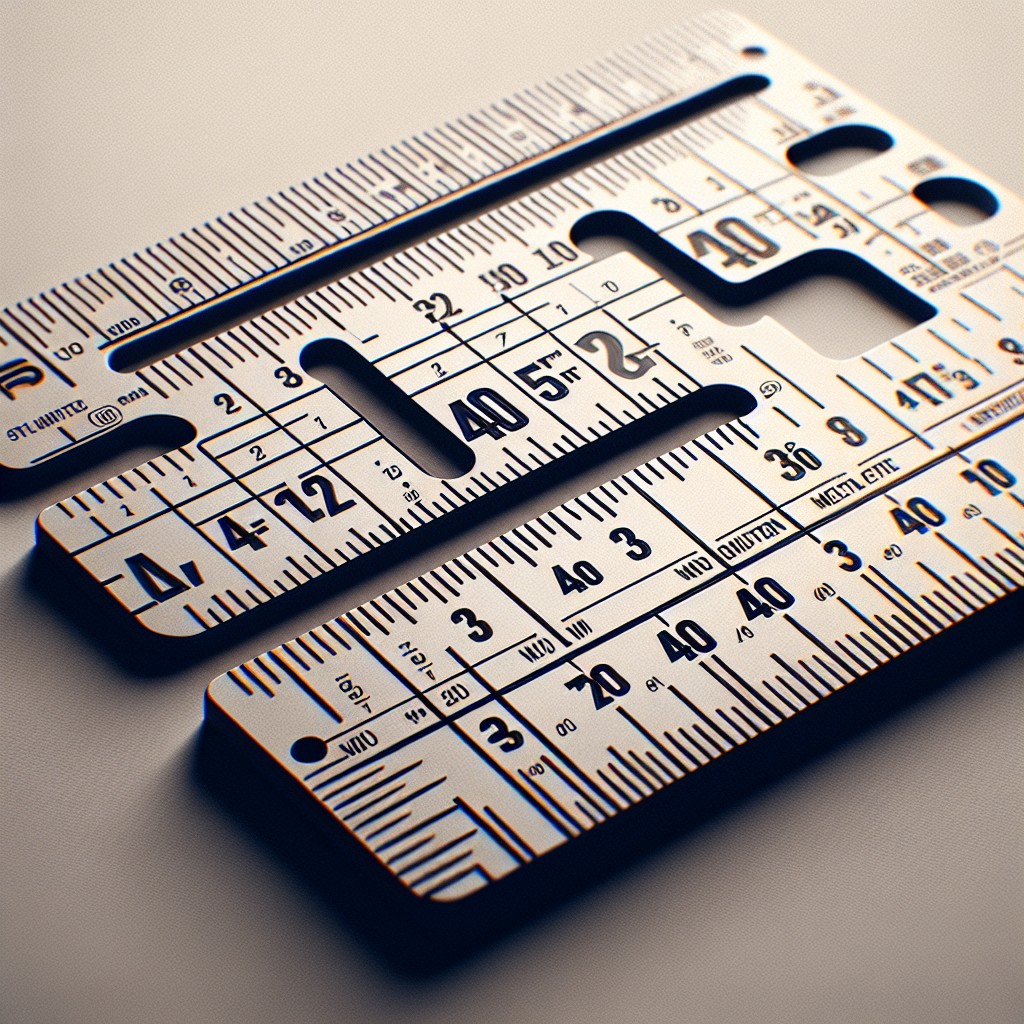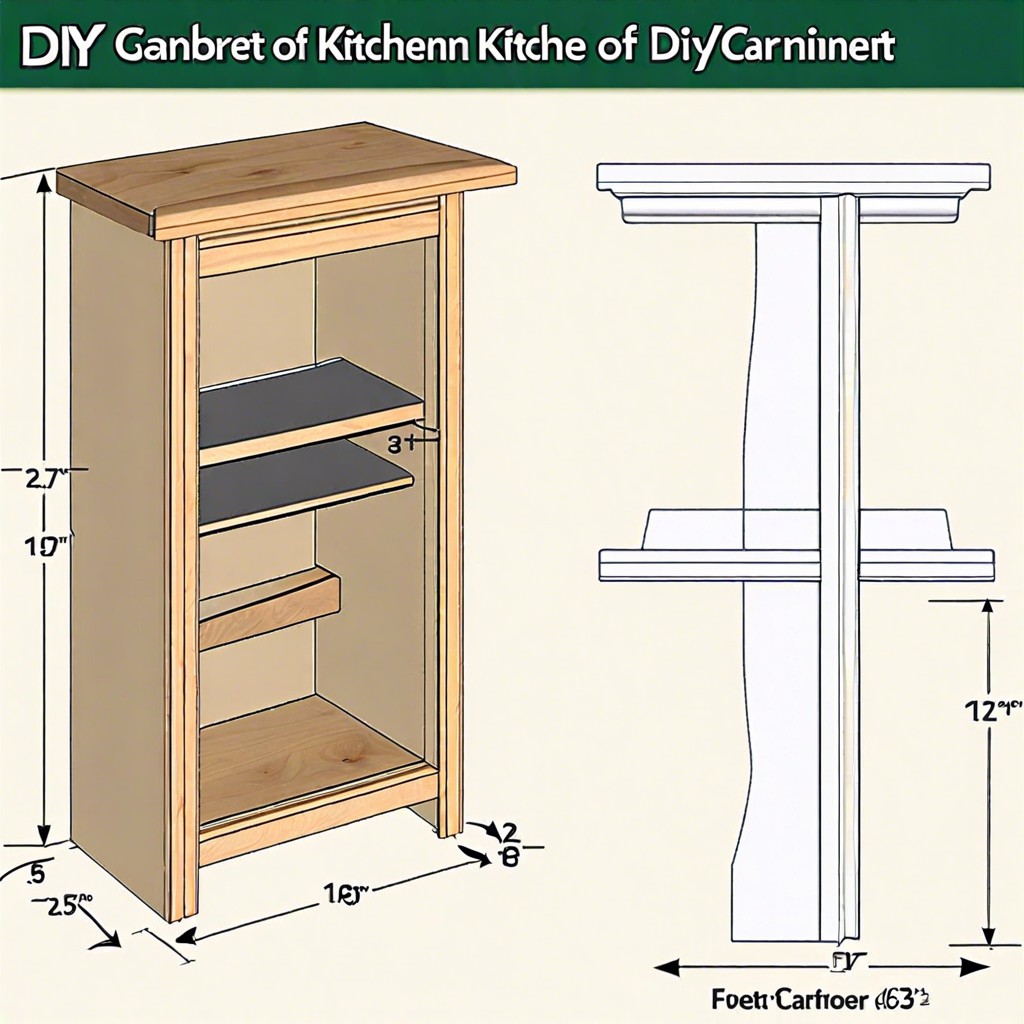Last updated on
Discover the vast world of measurements because understanding how big 40 cm is can change your perception of everyday items and spaces.
Key takeaways:
- 40 cm is equivalent to approximately 15.748 inches.
- Converting 40 cm to inches involves multiplying by 0.393701.
- Knowing how to convert centimeters to inches is useful in various everyday situations.
- For more precise measurements, use a calculator or conversion tool.
- Visualize 40 cm by comparing it to everyday objects like a ruler or smartphone.
What's Inside
Cm to Inches

Converting centimeters to inches is a straightforward process once you’re familiar with the conversion factor. One centimeter is equivalent to 0.393701 inches.
To convert 40 centimeters to inches, you multiply 40 by this factor:
40 cm * 0.393701 = 15.748 inches.
This conversion is useful for a variety of everyday situations. Whether you’re measuring for a new piece of furniture, working on a craft project, or need to understand a product’s dimensions that are provided in centimeters, knowing how to convert to inches can provide clarity and aid in visualization.
Keep in mind that for more precise tasks, such as engineering or technical drawings, it’s essential to use a calculator or conversion tool to ensure accuracy.
Converting 40 Centimeters to Inches

Understanding how to convert 40 centimeters to inches is straightforward. The conversion factor between centimeters and inches is that one inch is equivalent to 2.54 centimeters.
To find out how many inches are in 40 centimeters, you divide the number of centimeters by the conversion factor:
40 cm ÷ 2.54 cm/inch = 15.748 inches
So, when you’re looking at a measurement of 40 centimeters, you’re actually looking at just under 16 inches. This conversion is useful in a variety of situations, from measuring furniture to buying the correct-sized frame for a photograph.
Keep this conversion in mind, and with a simple division, you’ll have the measurement in inches whenever you need it.
Conversion Guide of 40 Centimeters to Inches
Grasping the conversion from centimeters to inches provides a useful tool for a range of activities from measuring for craft projects to understanding dimensions when traveling abroad, where different measurement systems are used.
Here’s a straightforward guide to help you translate 40 centimeters into inches:
- Remember the conversion factor: One inch is equal to 2.54 centimeters. This is your go-to number for all conversions between these units.
- Use simple math: Divide the centimeter value by the conversion factor. For 40 centimeters, the calculation would be 40 ÷ 2.54.
- Round if necessary: Depending on your need for precision, you may round the result. The exact result of 40 cm converted to inches is approximately 15.748 inches, but for practical purposes, you might round to 15.75 inches.
- Consider precision: If you’re using the measurement for something that requires high precision, like technical drawings or construction projects, keep as many decimal places as needed. Otherwise, rounding to the nearest quarter-inch is typically sufficient.
- Use a calculator or conversion chart: To simplify the process, you can use a calculator or refer to a pre-made conversion chart for common measurements.
By keeping these points in mind, you can confidently convert centimeters to inches, ensuring that the next time you encounter a measurement in centimeters, like 40 cm, you’ll instantly know that it’s just shy of 16 inches tall, wide, or long.
Understanding the Conversion Formula
Grasping the conversion formula is simpler than it sounds; it’s your key to unlock the relationship between centimeters and inches. The formula hinges on the fact that one inch is equal to exactly 2.54 centimeters. Therefore, to convert from centimeters to inches, you divide the number of centimeters by 2.54.
Here’s your handy takeaway:
- Keep in mind the number 2.54; it’s the constant you’ll use every time.
- Dividing by 2.54 converts cm to inches, while multiplying by 2.54 will do the reverse.
- A calculator is your friend here, ensuring precision in your calculations.
- For quick mental conversions, knowing that 2.5 cm is roughly equivalent to 1 inch can be a helpful approximation.
With these points in mind, converting measurements should be a breeze, offering you a clear understanding of how any object sized in centimeters measures up in inches.
Practical Examples
Visualizing 40 centimeters in everyday objects can help to cement the concept in a real-world context. Here are some common items that approximate this measurement:
- Standard Ruler: Most school rulers are 30 cm long, so imagine a ruler plus a third of its length, and you’ve got a rough estimate of 40 cm.
- Waist Length: For an average-sized person, 40 cm is about half their waist circumference.
- Guitar Neck: A typical classical guitar’s neck is about 40 cm in length, which can give you a tangible sense of the length when picturing or holding such an instrument.
- Two Smartphones: Modern smartphones average about 15 cm in length. Stack two and a half on top of each other for a makeshift 40 cm ruler.
- Keyboard Width: Keyboards are generally around 40 cm wide, so looking down at your desktop setup provides an immediate reference.
Remember, these are estimates and can vary, but they offer a quick and tangible way to grasp how big 40 cm is without having to measure.
Tips for Accurate Conversions
To ensure precise conversions from centimeters to inches, embrace these helpful pointers:
- Use a reliable conversion tool or app when you’re looking to get quick results without manual calculations.
- Double-check your results, especially when dealing with measurements that require high accuracy.
- Remember to maintain the decimal places during conversion for precision; rounding off should be done at the end if necessary.
- When converting measurements for crafts or construction, consider using a tape measure that includes both centimeters and inches to eliminate conversion errors.
- If you frequently convert between metric and imperial units, familiarize yourself with common equivalent values (for example, 2.54 centimeters in an inch) to expedite the process.
- Always cross-reference measurements, particularly for important projects, to confirm your conversion matches the expected dimension.
Adhering to these guidelines will help you achieve accurate conversions and avoid the pitfalls of incorrect measurements.
Centimeters to Inches Conversion Chart
A conversion chart is a quick reference tool that instantly shows the equivalents between centimeters and inches without the need for calculation. To use the chart efficiently, locate the centimeters you wish to convert in the left-hand column and directly across in the corresponding right-hand column, you’ll find the inches equivalent.
Here are some key points to effectively utilize a conversion chart:
- The chart is organized in ascending order, making it easy to navigate through different measurements.
- For values not explicitly listed, interpolate between the given figures for a close estimate.
- Charts typically show a rounded-off value for convenience, noting that the exact conversion factor is 1 inch equals 2.54 centimeters.
- Accuracy increases when the chart includes more increments; finely detailed charts are available for precision work.
Carrying a pocket-sized chart or having one as a smartphone app can be incredibly handy for designers, craftsmen, or anyone involved in international product purchasing.
Facts On Cm to Inches
The centimeter-to-inch conversion is rooted in the difference between the metric and imperial systems. While the metric system is widely adopted worldwide due to its ease of scaling, the United States still relies substantially on the imperial system.
Here are some intriguing points about the relationship between centimeters and inches:
- One inch is defined as exactly 2.54 centimeters. This precise equivalency helps in making conversion reliable and consistent.
- The inch traces its roots back to the Roman “uncia,” which is approximately the width of a human thumb. In contrast, the centimeter is a modern metric unit, derived from the meter.
- Centimeters offer a more granular measurement than inches, which is why they are preferred in fields requiring fine detail, such as tailoring and engineering design.
- The 12-inch ruler, one of the most common measuring tools in the United States, would be nearly 30.5 cm long.
- A standard A4 sheet of paper, commonly used outside of North America, measures 21 cm by 29.7 cm, which roughly translates to 8.27 inches by 11.69 inches.
Understanding these points elucidates why converting between these two units of measurement is so pivotal in various professional and everyday contexts.
Solved Examples On Cm to Inches
Let’s illustrate how to apply the cm to inches conversion in real-world scenarios:
1. Frame Dimensions: Imagine you’re purchasing a picture frame listed as 40 cm in height. To understand how it would fit your wall space in inches, multiply 40 by 0.39370, resulting in a height of approximately 15.748 inches.
2. Monitor Size: You’re interested in a computer monitor that’s 40 cm wide. You need the measurement in inches for your desk setup. Multiplying 40 cm by the conversion factor gives you a width of around 15.748 inches, which might fit well between your speakers.
3. Sewing Fabric: You’re sewing a costume and need a length of fabric that’s 40 cm. Fabric stores often use inches in the United States, so knowing the measurement in inches, which is 15.748, can help you communicate your needs effectively.
These examples show that the key to a smooth measurement conversion lies in a simple multiplication by the factor 0.39370. Keeping this factor in mind can make international shopping, digital work, and creative projects much more manageable.
FAQ
What is the actual size of 40 cm in inches?
The actual size of 40 cm in inches is approximately 15.748 inches.
How long is the 40 cm?
40 centimeters is approximately equivalent to 15.748 inches.
How big is 30 by 40 cm in inches?
The size of 30 by 40 cm is approximately 11 3/4 by 15 3/4 inches.
What does 1 cm in length look like?
A 1 cm length is approximately equivalent to the width of a standard pencil, the length of a staple, or the thickness of a standard notepad.
How does a 40 cm measurement compare to an average A4 paper size?
A 40 cm measurement is longer than the length of an average A4 paper, which measures 29.7 cm.
What common items have a dimension of around 40 cm?
An A2 paper, a standard desktop monitor, and a violin case are common items that have a dimension of around 40 cm.
How many times can a 40 cm length fit into a meter?
A 40 cm length can fit into a meter 2.5 times.




